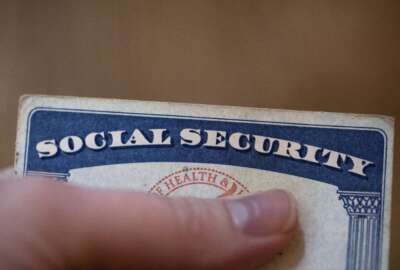Ever had a radiator blow out? The first sign is a pleasantly sweet smell in your car. When antifreeze boils, it smells sort of good. But it means your engine will soon overheat, with disaster soon to follow unless you stop.
That big, 5.9% cost of living adjustment (COLA) just announced by Social Security does seem sweet if you’re collecting. But it indicates a big problem. Namely, the flywheel of inflation — so long still we thought it would never start up again — is starting to spin.
The Bureau of Labor Statistics basket of consumer goods rose 5.4% from a year earlier, and that’s what drives Social Security payouts. If you’ve driven anywhere you’ve seen it. A good place to measure inflation is at one of those big combination gas stations/convenience mart/restaurant spots. The other day in Pennsylvania my high-test was $4.05 a gallon, and my 5-pack of cigarillos had shot up 50 cents.
A person can drive less perhaps. But people can’t stop paying rent, or replacing a broken fridge (if you can find one). You can quit the cigarillos, but you can’t stop eating. Trying to buy a place, like maybe selling the old 4-bedroom colonial homestead with 2-car-garage and downsizing? Home prices are insane!
Used cars, meat, fuel — everything is on the rise.
And people collecting Social Security are likely also using Medicare. Premiums for Part B are likely to rise next year by $10 per month. That’s what the Medicare trustees said in their most recent annual report. For many federal employees both working and retired, Federal Employee Health Benefit Program premiums are headed up next year around 4%.
So while welcome, that COLA — the biggest since 1982 — just keeps recipients abreast of rising prices. At least it keeps rising prices from getting too far ahead, but only for that portion of their income that Social Security benefits represent. If inflation is a fever, COLAs are the Advil tablets. They can relieve the systems, but not cure the cause.
The economists, the policy-addicts, the editorialists and the politicians are now in full-blown argument about what is causing inflation. No one knows whether it’s a short-term, or transitory, phenom. My Econ 101 defined inflation as too many dollars chasing too few goods. You can find plenty of theories, but the labor and supply chain disruptions of the pandemic underlie many of them. Some say it’s the after effects of President Trump. Or the outcome of Joe Biden. Maybe it’s sun spots.
Let’s hope it’s transitory, as the Federal Reserve has been insisting.
The first gulp of real, harmful inflation for my generation somehow traces to the Arab oil embargo of 1973. Before that, the old Impala coupe would go for a weekend on $2 of gas.
Never again would we see 35-cent gasoline. The era of inflation that ensued spawned the word “stagflation” — slow growth and inflation together. I felt lucky to get my first mortgage at 13%. Certificates of deposit, which now pay 0.6%, paid out in double digits. Any feds out there remember those WIN — “Whip Inflation Now” — lapel buttons?
So if the 5.9 jump in Social Security payments helps, great. If its means we’re rerunning 1973, it’ll amount to a drop in the bucket.
Nearly Useless Factoid
By David Thornton
The iconic mask worn by Michael Myers in the “Halloween” movie franchise originally began as a mask of William Shatner painted white.
Source: ScreenGeek
Copyright
© 2024 Federal News Network. All rights reserved. This website is not intended for users located within the European Economic Area.





